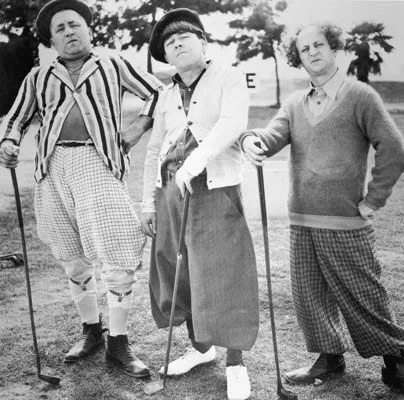NZ GOLF SPEAKS OUT
Golf has a significant and positive impact on Auckland. This impact is realised through social, environmental, economic and community outcomes for the city and its people.
Our vision is to be an integral part of Auckland’s future, enriching Auckland through golf. To achieve this, we must be an innovative leader in sport, delivering increasingly greater outcomes for Auckland and its communities. As a growing sport we’re working hard to add this value to Auckland and its people.
As the leadership body for the sport, New Zealand Golf is concerned about the publicity and messaging regarding Auckland Council managed and owned golf facilities and golf in general within Auckland.
There is an imbalance in the messaging that may have detrimental consequences not only for golf, but for the people of Auckland. Of particular concern is the publicity regarding the financial value of the facilities being presented in isolation. The discussion does not provide a fair representation of the true value of golf or golf facilities to Auckland.
To balance this discussion and add greater clarity to the messaging, we present the following facts and research.
Golf is a growing sport and is contributing towards the vision of being the world’s most active city.
1. Golf is the largest club-based sport in the country with an estimated 500,000 participants.
2. Over 94,000 Aucklanders play golf each year and it is expected that over 130,000 Aucklanders could be playing golf annually by 2030. Accordingly, there is a risk that the number of golf clubs that currently operate across Auckland will not be able to meet the demand within the next 20 years (2033).
3. Over 1,000,000 competitive rounds of golf are played in Auckland annually which do not include a large number of events, charity days, corporate days or practice rounds.
4. Since 2013, golf club membership within Auckland has grown 1% to 24,321. For context, golf's adult club membership is larger than rugby, netball and football's adult membership combined.
5. New Zealand Golf started to register casual golfers/non-members in 2014 and this has grown per annum significantly with 38,005 Aucklanders formally registering.
6. The existing network of golf facilities provide a wide variety of pricing for membership and green fees which makes golf accessible to a diverse range of participants in age, ethnicity, gender and income levels.
7. Active New Zealand Survey undertaken by Sport New Zealand (2017) highlights golf as one of the most popular sport and recreation activities for adults with approximately 116,423 (11%) Aucklanders participating in the last 12 months.
For context, participation for mountain biking (9%), tennis (8%), football (8%), netball (4%), cricket (4%) hockey (2%) and rugby (2%).
• Golf is one of the most popular sport and recreation activities for males and females. For context
▪ 19% of males have played golf in the last 12 months
▪ Male participation across other sports, football (10%), tennis (9%), cricket (7%) and rugby (4%)
▪ 5% of females have played golf in the last 12 months
▪ Female participation across other sports, netball (8%), tennis (7%), football (4%), cricket (2%)
and rugby (1%).
• Golf attracts participants from many different ethnic backgrounds to be active. For context
▪ Golf - Chinese (7%), Indian (8%), Samoan (12%), Maori (11%), NZ European (12%)
▪ Tennis - Chinese (7%), Indian (6%) Samoan (4%), Maori (7%), NZ European (9%)
▪ Football - Chinese (5%), Indian (11%), Samoan (5%), Maori (5%), NZ European (7%)
▪ Rugby - Chinese (0%), Indian (1%), Samoan (7%), Maori (5%), NZ European (2%).
• Golf is popular across North Harbour (12%), Auckland Central (11%), Waitakere (10%) and Counties Manukau
(10%). Removal of golf’s footprint will have an impact on accessibility and participation and exacerbate gaps within the facility network.
• Young peoples (5-17 years) participation in golf across New Zealand is the equivalent to other sport and recreation activities such as Rugby League, Fishing or Water Polo/Flipper Ball.
Golf contributes significantly to the health and wellbeing of Aucklanders for all ages
8. Children introduced to golf at an early age enjoy learning and playing the game with parents and develop the motivation, confidence and skills to be active and play a sport for the rest of their lives.
9. An 18-hole round of golf can involve walking up to nine kilometres and around 12,000 steps, exceeding the commonly recommended daily amount of steps for health. Golf’s physical health benefits include the treatment and prevention of more than 40 major chronic diseases. For example, research undertaken by SBP and Street Ryan for Golf Victoria found the physical health benefits contribute $33 million per year to the State of Victoria due to the prevention of ischemic
heart disease, type 2 diabetes, stroke, colorectal cancer and breast cancer.
10. 92% of the burden of disease that results from being physically inactive is borne by people aged 15 years and above.
Therefore, it is imperative that people are encouraged to be active into and throughout adulthood. This highlights golf's uniqueness as a sport popular across the lifespan with minimal drop off in participation as shown by data below from Active New Zealand Survey (2017).
11. Diseases which are preventable through physical inactivity have a significant negative impact on the health of New Zealanders aged 55+ years of age – therefore golf participation plays a significant, preventative role in the later stages of life.
12. A landmark Swedish study of over 300,000 golfers found regular golfers live an average of five years longer than nongolfers, regardless of age, gender or socio-economic status.
13. Playing golf helps reduce the risk of anxiety, depression, and dementia while improving confidence and boost selfesteem, all of which contribute to mental well-being.
18-24 25-34 35-49 50-64 65-74 75+
Golf 13% 11% 12% 12% 11% 8%
Tennis 14% 9% 10% 7% 3% 2%
Football 17% 9% 8% 2% 0% 0%
Rugby 8% 4% 2% 0% 0% 0%
Netball 14% 10% 5% 1% 0% 0%








